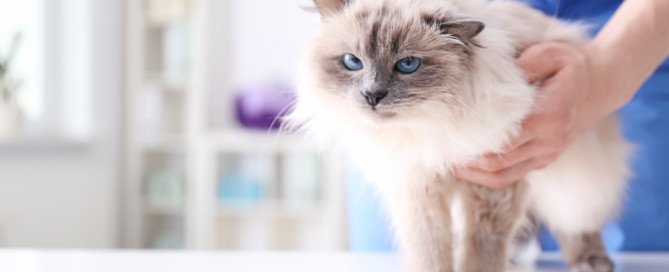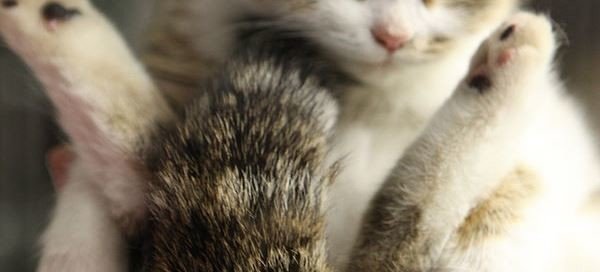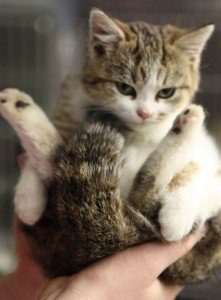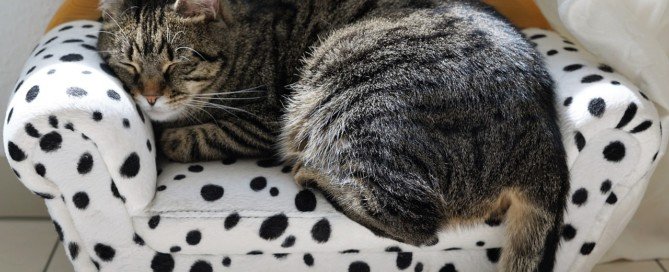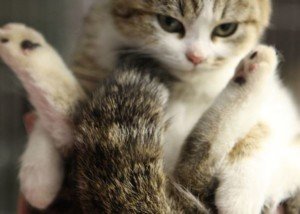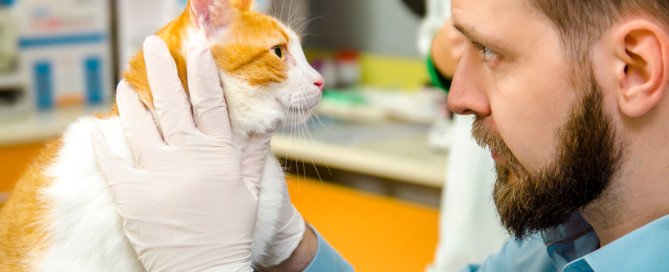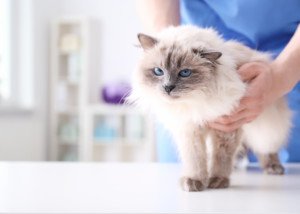URINE: Cancer Fear over Colors, Odor, Burning

Here’s complete information about urine colors, smell, burning when you “go” and other excrement-related issues for cancer-phobes.
If you can’t get through the day without urinating into a plastic cup to inspect your excrement, even going as far as putting a color chart up against the fluid, then the articles below are for you.
However, even if you’re health conscious at a tamer level, you will learn a lot by reading these articles about all sorts of issues relating to urine.
CANCER
– Can Cancer Cause Burning Urination
– Blood in Urine Caused by Cancer & Other Conditions
– Herbal Natural Treatment for Bladder Cancer Shows Promise
– Frequent Urge to Urinate: Bladder Cancer Possible
– Causes of Cloudy Urine, How to Examine, Cancer
COLOR
– Why Your Urine Is the Color of a Blood Orange

Orange, Freepik.com, rawpixel.com
– Orange Urine vs. Dark Yellow: Telling the Difference
– Causes of Orange Urine: Can One Be Cancer?
– Causes of Blue and Green Urine, and Solutions
– Causes of Dark or Brown Urine: Over a Dozen
ODOR
– Sudden-Onset, Foul-Smelling Urine: Causes & Solutions
– Fishy Urine Smell Caused by Infected Vagina: Men Can Get Infected
– Why Does My Urine Stink, Especially in Morning
– Fishy Smell Around Penis: Causes and Solutions
MISC
– How Anxiety Leads to Frequent Urination
– Benign Causes of Bilirubin in Urine
– Why Does Running Increase Urge to Urinate?
– How Healthy Are You? Look at Your Urine
– What Causes Foamy Urine: Serious & Benign
– What Blood in Urine Means
BEETS
– Can an Entire Glass of Beet Juice Go Undigested?
– Beets, Red in Toilet, in Urine and Poops
– Beeturia Q & A: Worried About Beets in Urine and Stools?
 Lorra Garrick has been covering medical, fitness and cybersecurity topics for many years, having written thousands of articles for print magazines and websites, including as a ghostwriter. She’s also a former ACE-certified personal trainer.
Lorra Garrick has been covering medical, fitness and cybersecurity topics for many years, having written thousands of articles for print magazines and websites, including as a ghostwriter. She’s also a former ACE-certified personal trainer.
.
Top image: Shutterstock/omicsonline
Will Vet Treat Injured Cat if Owner Cannot Pay Bill?

If you’re reluctant to bring an injured cat in for emergency treatment because you can’t pay the bill, here’s encouraging information from a veterinarian.
It’s one thing when a cat gets sick (ongoing diarrhea, starts limping, fur is falling out) and you’re broke and thus, don’t take your pet in to see the vet.
After all, you hope that the symptoms will go away on their own.
But what if your cat suddenly gets injured?
You’re thinking that if you bring it in for emergency treatment, you won’t be able to pay the bill.
Hold on – this situation is not as dismal as you might be thinking.
You “should know that in case of severe trauma, most states require a veterinarian to provide basic first aid, whether or not they are paid,” explains Jean Hofve, DVM, who has 20+ years’ experience in both conventional and alternative veterinary medicine, and author of the eBook, “What Cats Should Eat.”
Dr. Hofve further explains, “This is important, for example, if you see an animal that isn’t yours get injured; for instance, hit by a car.
“But if you authorize any further treatment beyond immediate stabilization, you will be expected to pay for it.”
So if your cat is hit by a car and suffers a broken leg, take it in for emergency treatment including X-rays and setting the leg — and you won’t have to pay for it.
The cat is stabilized once the broken bone is set, and at that point, any additional medical care (such as an infection a few days later) will be charged to you.
Same with surgery for organ damage sustained in a vehicular accident.
Or if your cat is gashed by a dog, again, you will not have to pay the bill for basic wound clean-up, stitching and bandaging.
The cat is stabilized at this point and you can take it home. Follow-up care, however, will be on your tab.
 Now retired from veterinary medicine, Dr. Hofve has researched pet nutrition and the pet food industry since the early 1990s. She has written dozens of articles and has been interviewed for print, radio and television around the world. She is author of the eBook, “What Cats Should Eat.”
Now retired from veterinary medicine, Dr. Hofve has researched pet nutrition and the pet food industry since the early 1990s. She has written dozens of articles and has been interviewed for print, radio and television around the world. She is author of the eBook, “What Cats Should Eat.”
 Lorra Garrick has been covering medical, fitness and cybersecurity topics for many years, having written thousands of articles for print magazines and websites, including as a ghostwriter. She’s also a former ACE-certified personal trainer.
Lorra Garrick has been covering medical, fitness and cybersecurity topics for many years, having written thousands of articles for print magazines and websites, including as a ghostwriter. She’s also a former ACE-certified personal trainer.
.
Top image: Shutterstock/New Africa
Kitten’s Swollen, Irritated Anus: Causes & Solutions
A vet explains why your kitten’s anus is swollen and irritated: MANY possible causes.
This could be due to quite a few possible causes that then indirectly lead to anal irritation and swelling.
The most likely cause is “scooting.” This is when a cat (or kitten) drags its behind along the floor or ground.
Of course, the anus will become irritated and swollen because of the repeated contact.
But the big question is: Why is your kitten scooting in the first place?
“Excessive scooting for any reason will cause swelling and redness,” says Jean Hofve, DVM, who has 20+ years’ experience in both conventional and alternative veterinary medicine, and author of the eBook, “What Cats Should Eat.”
Dr. Hofve says that scooting in a kitten may be caused by the following conditions (no particular order):
– Anal sac inflammation, infection or impaction
– Pyoderma (bacterial skin infection)
– Yeast infection
– Urinary tract infection
– Ringworm (a fungal skin infection)
– Tapeworms/coccidian/pinworms/other intestinal parasites
– Changes in gut flora (may occur after antibiotic treatment)
– Urethritis/vaginitis
– Proctitis (inflammation of the anus/rectum)
– Diarrhea or constipation
– Vaginal hairball/foreign body
– Low back pain
– Displacement behavior (cat continues scooting after the primary cause is resolved)
There are additional causes of scooting — which then could cause the anus to become swollen and irritated — but these additional causes are not as likely to occur in a kitten, but rather, a cat:
– Fleabite allergy
– Food allergy
– Atopy (inhalant allergy)
– Environmental allergy
– Inflammatory bowel disease
– Obesity
And One More Possible Reason for a Kitten’s Swollen, Irritated Anus
Dr. Hofve says that an additional cause could be “rectal prolapse and irritation from suckling by littermates (more common than you would think!). Depends to a large extent on age of kitten.”
 Now retired from veterinary medicine, Dr. Hofve has researched pet nutrition and the pet food industry since the early 1990s. She has written dozens of articles and has been interviewed for print, radio and television around the world. She is author of the eBook, “What Cats Should Eat.”
Now retired from veterinary medicine, Dr. Hofve has researched pet nutrition and the pet food industry since the early 1990s. She has written dozens of articles and has been interviewed for print, radio and television around the world. She is author of the eBook, “What Cats Should Eat.”
 Lorra Garrick has been covering medical, fitness and cybersecurity topics for many years, having written thousands of articles for print magazines and websites, including as a ghostwriter. She’s also a former ACE-certified personal trainer.
Lorra Garrick has been covering medical, fitness and cybersecurity topics for many years, having written thousands of articles for print magazines and websites, including as a ghostwriter. She’s also a former ACE-certified personal trainer.
Cat’s Lower Lip Droops on One Side: Cancer, Stroke May Be Cause
Will Yogurt Make Your Cat Sick?
Will yogurt make your cat sick? Will yogurt — considered healthy for people — cause your cat to vomit?
Many people will give their cat milk without a second thought, and milk is a dairy product as much as yogurt is.
So it’s always interesting when people wonder if yogurt can harm their cat.
The answer to the question?
“No. Too many carbohydrates, and not enough probiotics to make a difference,” says Jean Hofve, DVM, who has 20+ years’ experience in both conventional and alternative veterinary medicine, and author of the eBook, “What Cats Should Eat.”
Dr. Hofve continues, “If your cat needs probiotics, use a good quality human probiotic supplement.”
These can be found in the supplement section of a conventional grocery store, as well as in a health food store.
They can also be ordered online.
To get your cat to consume the supplement, you can opt for chewable flavored tablets or mix the supplement in your cat’s food.
If your cat loves yogurt, however, there is no harm in feeding your pet unsweetened plain. Your pet does not need the added sugars.
An alternative is to mix the yogurt with the milk that you normally give to your cat.
You may also want to consider kefir, which is a dairy product that can accurately be described as a cross between yogurt and milk.
It’s thick like a shake. Pour this into your cat’s bowl and see what happens.
Make sure you give your pet unsweetened plain rather than fruit flavored.
 Now retired from veterinary medicine, Dr. Hofve has researched pet nutrition and the pet food industry since the early 1990s. She has written dozens of articles and has been interviewed for print, radio and television around the world. She is author of the eBook, “What Cats Should Eat.”
Now retired from veterinary medicine, Dr. Hofve has researched pet nutrition and the pet food industry since the early 1990s. She has written dozens of articles and has been interviewed for print, radio and television around the world. She is author of the eBook, “What Cats Should Eat.”
 Lorra Garrick has been covering medical, fitness and cybersecurity topics for many years, having written thousands of articles for print magazines and websites, including as a ghostwriter. She’s also a former ACE-certified personal trainer.
Lorra Garrick has been covering medical, fitness and cybersecurity topics for many years, having written thousands of articles for print magazines and websites, including as a ghostwriter. She’s also a former ACE-certified personal trainer.
Cat Licking Off Fur: 10 Causes Named by Vet
Here’s what a veterinarian, not layperson in a forum, says about what might be causing your cat to lick off its fur.
Does your cat frequently lick off its fur, sometimes even in patches?
I asked this question to Jean Hofve, DVM, who has 20+ years’ experience in both conventional and alternative veterinary medicine, and author of the eBook, “What Cats Should Eat.”
Dr. Hofve names 10 situations that could cause a cat to lick at its fur. They are as follows:
– Fleas/fleabite allergy
– Mites (scabies, Cheyletiella, Demodex)
– Ringworm
– Endocrine disease (Cushing’s disease, other hormonal disturbances)
– Contact dermatitis (allergy to bedding, detergent, etc.)
– Food allergy
– Atopy (inhalant allergy)
– Diet (fatty acid deficiency)
– Pain
– Behavioral: anxiety, stress, OCD
As you can see, a few of these causes of excessive fur licking in a cat have sub-causes.
Solutions for a Cat that Keeps Licking off Its Fur
Dr. Hofve explains that “for parasites and medical conditions, treat the cause. Note that scabies, mites and ringworm are highly contagious to other pets and humans.
“For diet, give supplemental fatty acids (EPA, DHA, evening primrose oil).
“For psychogenic causes, environmental enrichment, flower essences, homeopathy, calming herbs, drug therapy (Prozac, etc.).”
 Now retired from veterinary medicine, Dr. Hofve has researched pet nutrition and the pet food industry since the early 1990s. She has written dozens of articles and has been interviewed for print, radio and television around the world. She is author of the eBook, “What Cats Should Eat.”
Now retired from veterinary medicine, Dr. Hofve has researched pet nutrition and the pet food industry since the early 1990s. She has written dozens of articles and has been interviewed for print, radio and television around the world. She is author of the eBook, “What Cats Should Eat.”
 Lorra Garrick has been covering medical, fitness and cybersecurity topics for many years, having written thousands of articles for print magazines and websites, including as a ghostwriter. She’s also a former ACE-certified personal trainer.
Lorra Garrick has been covering medical, fitness and cybersecurity topics for many years, having written thousands of articles for print magazines and websites, including as a ghostwriter. She’s also a former ACE-certified personal trainer.
.
Top image: Phoenixns
Cat Drags Butt on Floor after Pooping: Causes & Solutions

A veterinarian explains the many causes, and solutions behind why a cat drags its butt on the floor after pooping.
It’s not uncommon for a cat to drag its butt across a floor after having a bowel movement.
Cat Drags Butt on Floor after Pooping: Causes
“There are a surprising number and variety of reasons for this behavior, which we vets technically refer to as scooting,” begins Jean Hofve, DVM, who has 20+ years’ experience in both conventional and alternative veterinary medicine, and author of the eBook, “What Cats Should Eat.”
“Potential causes, from more to less common (depending on who you ask), include:
– Anal sac inflammation, infection or impaction
– Diarrhea
– Fleabite allergy
– Food allergy
– Atopy (inhalant allergy)
– Environmental allergy
– Pyoderma (bacterial skin infection)
– Yeast infection
– Tapeworms/coccidian/pinworms/other intestinal parasites
– Changes in gut flora (may occur after antibiotic treatment)
– Obesity (cat too fat to clean itself, leading to urine scald and skin irritation)
– Urethritis or vaginitis
– Vaginal hairball or foreign body
– Urinary tract infection
– Proctitis (inflammation of the anus/rectum)
– Inflammatory bowel disease
– Constipation
– Ringworm (a fungal skin infection)
So, though a few of these causes probably made you scrunch your face, the good news is that cancer is not among them.
It goes without saying — if your cat is scooting its butt across the floor, it really would be a smart idea to take your pet to the veterinarian.
Don’t take the chance that the butt dragging is being caused by something as very benign as constipation as opposed to a tapeworm infiltration.
If your cat is fat, don’t assume that this is the only reason for the dragging.
It’s always possible that dragging the butt across the floor can have more than one cause. Only a veterinarian can make this determination.
 Now retired from veterinary medicine, Dr. Hofve has researched pet nutrition and the pet food industry since the early 1990s. She has written dozens of articles and has been interviewed for print, radio and television around the world. She is author of the eBook, “What Cats Should Eat.”
Now retired from veterinary medicine, Dr. Hofve has researched pet nutrition and the pet food industry since the early 1990s. She has written dozens of articles and has been interviewed for print, radio and television around the world. She is author of the eBook, “What Cats Should Eat.”
 Lorra Garrick has been covering medical, fitness and cybersecurity topics for many years, having written thousands of articles for print magazines and websites, including as a ghostwriter. She’s also a former ACE-certified personal trainer.
Lorra Garrick has been covering medical, fitness and cybersecurity topics for many years, having written thousands of articles for print magazines and websites, including as a ghostwriter. She’s also a former ACE-certified personal trainer.
Is Cancer Why Your Cat’s Vomit Is White & Foamy?

A veterinarian reveals if cancer could cause a cat’s vomit to be white and foaming.
If your cat has been retching a foamy white substance lately, perhaps you’ve wondered if this could mean cancer.
But there are actually many non-cancer causes of white, frothy vomitus, including overeating and, interestingly, not eating enough.
“Unfortunately, any one of about a zillion things” could be responsible, begins Jean Hofve, DVM, who has 20+ years’ experience in both conventional and alternative veterinary medicine, and author of the eBook, “What Cats Should Eat.”
Dr. Hofve continues, “There are more differentials (potential causes) for vomiting than for just about any other symptom, especially in cats!”
Cancer
“There are hundreds of causes [of specifically a foamy white caliber to the vomitus], and yes, cancer CAN be one of them,” explains Dr. Hofve.
“Cancer, IBD, neurological problems, etc., in the early stages can in fact produce mild, intermittent symptoms, like white foamy vomit.”
She adds, “What’s in the vomit depends on what’s in the stomach, and that can be anything from a pile of food to a little bit of foam.”
Before you jump to the conclusion that your cat’s second day of upchucking a sudsy-looking substance means your pet has cancer, there are other considerations to take note of.
Dr. Hofve notes that “if other symptoms arise, or, if it gets worse (more frequent, more severe, etc.), then the chances of serious disease go up.
If the cat hasn’t eaten lately, then the vomit will be only foam, regardless of the cause of the vomiting.
“The key is really that a mild bout of vomiting, by itself, isn’t an issue. If it’s cancer, it will eventually get worse.
“The important thing to know is that occasional, minor instances of vomiting are not usually significant as long as the cat is acting normal (no changes in eating, drinking, peeing, pooping or behavior).
“One thing I see frequently is a cat vomiting clear foamy mucus after eating grass. It may take a few tries to get out the grass itself. The same thing often happens with hairballs: multiple efforts that produce only foam, before the piece de resistance is finally ejected.”
When should you take your cat to the vet?
Dr. Hofve says, “If the vomiting persists; becomes more frequent; changes character; or additional symptoms (poor appetite, lethargy, fever, diarrhea, etc.) develop then it’s time to visit the vet.”
Other Medical Conditions that Can Cause a Cat to Throw up White Foam
Inflammatory bowel disease (IBD); inflammation of the small intestine; and disease of the liver, thyroid and kidney.
But if your cat has one of these conditions, chances are pretty good that there will be other symptoms like diarrhea and lethargy.
And more specifically, cancer of the GI tract and brain can result in a cat vomiting up some white foam.
 Now retired from veterinary medicine, Dr. Hofve has researched pet nutrition and the pet food industry since the early 1990s. She has written dozens of articles and has been interviewed for print, radio and television around the world. She is author of the eBook, “What Cats Should Eat.”
Now retired from veterinary medicine, Dr. Hofve has researched pet nutrition and the pet food industry since the early 1990s. She has written dozens of articles and has been interviewed for print, radio and television around the world. She is author of the eBook, “What Cats Should Eat.”
 Lorra Garrick has been covering medical, fitness and cybersecurity topics for many years, having written thousands of articles for print magazines and websites, including as a ghostwriter. She’s also a former ACE-certified personal trainer.
Lorra Garrick has been covering medical, fitness and cybersecurity topics for many years, having written thousands of articles for print magazines and websites, including as a ghostwriter. She’s also a former ACE-certified personal trainer.
Formula for How Much Your Cat Should Urinate Daily

A vet provides easy way to figure out how much your cat should urinate every day.
“The normal water intake for an adult cat is 45 ml (about 1-1/2 oz) per kg (2.2 lbs.) of body weight per day,” begins Jean Hofve, DVM, who has 20+ years’ experience in both conventional and alternative veterinary medicine, and author of the eBook, “What Cats Should Eat.”
She continues, “A 10-lb. cat is about 4.5 kg, which translates to 202 ml, or about 7 oz per day (a little less than a cup).
“They will urinate out a little over half of that, 28 ml (1 oz), per kg per 24 hours. (Note: kittens are far more variable, and much more susceptible to dehydration.).”
Other Variables Affecting How Much a Cat Urinates in a Day
Dr. Hofve explains, “A cat may drink more during hot weather or after exertion, but the amount of urine may actually decrease, because the body keeps more of that water.
“Normal feline kidneys have an amazing ability to regulate urine concentration to maintain fluid balance in the body.
“Most cats will urinate 2 to 4 times per day. The key is to figure out what is normal for your cat, and watch for changes.
“An increase in number or frequency of urinations, especially with reduced volume, may indicate bladder inflammation (FLUTD), crystals or stones.
“An increase in number of urinations with the same or increased volume can signal issues including diabetes, liver disease, kidney disease, thyroid disease, and many other metabolic problems.”
Behavior Can Affect Urination Frequency in a Cat

A cat may urinate outside the litterbox due to anxiety or territorial marking.
Stressful situations, such as changes in the household, new pets or altered routines can trigger anxiety-related urination.
This behavior is often a response to feeling unsettled or threatened.
Additionally, cats may mark their territory by urinating in various areas to assert dominance or claim their space, particularly if they perceive other animals or environmental changes as a challenge to their territory.
These behavior issues, though, are about when and where the urine is deposited, and even frequency—but not the volume.
Dr. Hofve says “the amount of urine produced per day does not change very much.”
 Now retired from veterinary medicine, Dr. Hofve has researched pet nutrition and the pet food industry since the early 1990s. She has written dozens of articles and has been interviewed for print, radio and television around the world. She is author of the eBook, “What Cats Should Eat.”
Now retired from veterinary medicine, Dr. Hofve has researched pet nutrition and the pet food industry since the early 1990s. She has written dozens of articles and has been interviewed for print, radio and television around the world. She is author of the eBook, “What Cats Should Eat.”
 Lorra Garrick has been covering medical, fitness and cybersecurity topics for many years, having written thousands of articles for print magazines and websites, including as a ghostwriter. She’s also a former ACE-certified personal trainer.
Lorra Garrick has been covering medical, fitness and cybersecurity topics for many years, having written thousands of articles for print magazines and websites, including as a ghostwriter. She’s also a former ACE-certified personal trainer.
Afraid the Vet will Hold Your Cat if You Can’t Pay Bill?
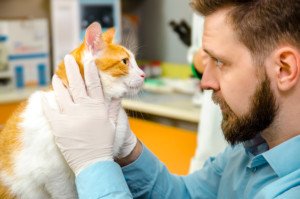
Here’s what a DVM says about vets holding cats when the owners can’t pay the bill.
“It is legal to hold the animal in some states, not legal in most others,” begins Jean Hofve, DVM, who has 20+ years’ experience in both conventional and alternative veterinary medicine, and author of the eBook, “What Cats Should Eat.”
Dr. Hofve continues, “But even if it is legal to hold the animal, a veterinarian would be very unlikely to do so, because the cat would continue to take up space, staff time, food, medications, etc., and in most cases has zero sale value.”
If your cat is sick or injured, worry first about your pet’s health and bring the cat to see your veterinarian—even if you fear you won’t be able to pay the bill.
“However, failing to pay for services after the vet has examined and treated your cat is considered theft of services,” says Dr. Hofve, “which would be a police matter.
“Do NOT take a pet in if you do not intend to pay! Bouncing or stopping a check may also result in criminal charges.”
There’s a difference between thinking you won’t be able to pay but intending to—prior to bringing in the cat, and intending not to pay as you’re even walking into the vet clinic carrying your sick or injured cat.
If you intend on paying the veterinarian but don’t know how you’ll come up with the money, have hope and just bring in your cat—after you carry out some recommendations by Dr. Hofve:
“It’s best to call the clinic ahead of time to discuss their particular payment requirements and your financial situation, to determine what your options are.
“For example, there may be low-cost services available at a local shelter or humane society; and many clinics maintain a fund to help folks in desperate situations get care for their pets.
See poisonedpets.com/financial-assistance-veterinary-bills for more ideas and resources.”
Of course, if your cat is suddenly injured, you may not have time to make phone calls first and instead will need to rush your pet over to the vet clinic as soon as possible.
But what if you’re totally broke, and your cat is hit by a car or attacked by a dog yet still alive? Or what if you happen upon an injured cat that’s not yours, and you have no money but want to get the animal immediate treatment?
Here’s encouraging information for cat lovers who find themselves in this predicament.
 Now retired from veterinary medicine, Dr. Hofve has researched pet nutrition and the pet food industry since the early 1990s. She has written dozens of articles and has been interviewed for print, radio and television around the world. She is author of the eBook, “What Cats Should Eat.”
Now retired from veterinary medicine, Dr. Hofve has researched pet nutrition and the pet food industry since the early 1990s. She has written dozens of articles and has been interviewed for print, radio and television around the world. She is author of the eBook, “What Cats Should Eat.”
 Lorra Garrick has been covering medical, fitness and cybersecurity topics for many years, having written thousands of articles for print magazines and websites, including as a ghostwriter. She’s also a former ACE-certified personal trainer.
Lorra Garrick has been covering medical, fitness and cybersecurity topics for many years, having written thousands of articles for print magazines and websites, including as a ghostwriter. She’s also a former ACE-certified personal trainer.
.
Shutterstock/Phoenixns
Why Bladder Infection in Elderly Causes Dementia Symptoms

A doctor explains why a urinary tract infection mimics Alzheimer’s dementia in elderly people.
As odd as it is, it’s true: A urinary tract infection (UTI), also known as a bladder infection, will often produce cognitive dysfunction in an elderly person—symptoms that resemble dementia or Alzheimer’s disease. Usually, the elderly patient does not experience burning or painful urination.
A savvy physician will order a UTI test in an elderly patient who’s been exhibiting new-onset cognitive impairment.
But what is it about a bladder infection that could cause symptoms that mimic dementia?
“We know that any patient who is medically compromised [such as with Alzheimer’s disease], can get worsening symptoms with an infection anywhere in the body, including a bladder infection,” says Kenneth Peters, MD, chief of urology for Beaumont Hospital, Royal Oak, MI. “This includes patients with underlying dementia and other neurologic disorders such as multiple sclerosis.
“The exact mechanism of action is unknown, but if the infection causes fever, this is a systemic reaction that may have a transient effect on the patient’s underlying symptoms.”
What if a seemingly cognitively intact elderly person exhibits sudden-onset signs of cognitive impairment, and it’s found that this person has a urinary tract infection—and after the infection clears up, the “confusion” and “memory problems” also go away?
Does this mean that this elderly individual actually has a very early process of cognitive decline—something that falls below the radar of family members and friends, who pass off the occasional blips as “just a normal part of aging”?
An elderly person may seem normal and still be well-functioning in the activities of daily living, yet actually score in the mild cognitive range on the SLUMS test. SLUMS stands for Saint Louis University Mental Status.
If a seemingly normal elderly person develops sudden signs of dementia, and it turns out they have a bladder infection, and as it clears up with antibiotics, the mental issues disappear, it’s likely that this person already has a cognitive decline in process that’s too early to grab anyone’s attention.
In fact, many family members think it’s normal for senior citizens to have memory lapses and have some mental fog here and there, not realizing that these symptoms may actually be the start of dementia in that particular person.
Keep in mind that it’s normal to lose some cognitive function with advancing age, and this includes memory lapses.
But dementia is progressive to the point of disability.
It is NOT normal for an elderly person to put a hairbrush in the refrigerator or forget her daughter’s name.
It would be very wise to have the elderly person, who exhibited dementia symptoms during a bladder infection, to undergo formal cognitive testing.




